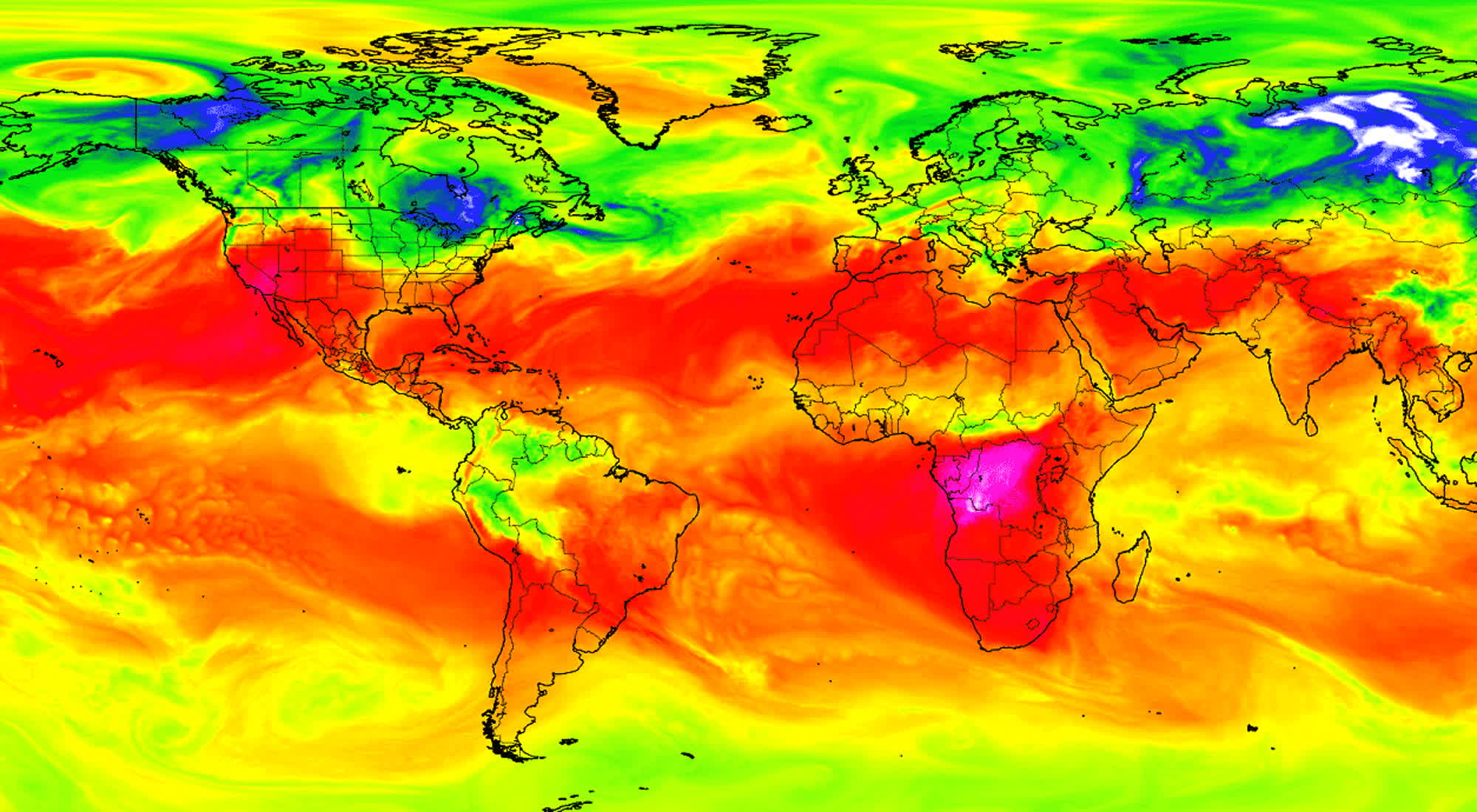
In a nutshell: Carbon dioxide, one of the worst greenhouse gases contributing to human-made climate change, keeps rising at an alarming rate. The latest Keeling Curve data taken at NOAA’s Mauna Loa Observatory in March 2024 says that the monthly average concentration of CO2 in the atmosphere is now 4.7 parts per million (ppm) higher compared to a year ago, marking the largest increase ever recorded.
The “Keeling Curve” was conceived by scientist Charles David Keeling as a graphical representation of the accumulation of carbon dioxide (CO2) in the Earth’s atmosphere. Data shown by the Keeling Curve is based on continuous measurements taken at the Mauna Loa Observatory on the island of Hawaii, from 1958 to the present day.
According to Ralph Keeling, director of the CO2 Program at UC San Diego’s Scripps Institution of Oceanography and son of the original creator of the Keeling Curve, the 4.7 parts per million (ppm) annual rise is the largest increase in CO2 concentration ever recorded. We “continue to break records” in the CO2 rise rates, Keeling said, and the ultimate cause of this undeniable phenomenon is a continued increase in the world’s fossil fuel consumption.
While carbon dioxide concentration keeps rising, the new record is partly attributed to the end of El Niño season. El Niño is a well-known global climate phenomenon caused by winds and sea surface temperatures over the tropical Pacific Ocean. Temperature variations follow an irregular pattern, but they do have a somewhat cyclical occurrence.
CO2 concentrations are affected by El Niño events; the previous most rapid growth rate of the greenhouse gas happened in 2016 at the end of El Niño season. The rising CO2 levels caused by the natural phenomenon are now adding their own share of greenhouse effects to the CO2 growth caused by fossil fuel emissions.
The National Oceanic and Atmospheric Administration announced in June last year that global concentration of CO2 rose to 421ppm, with a 50 percent increase compared to pre-industrial times. The updated Keeling Curve brings those CO2 levels to 426 ppm, the highest ever recorded in millions of years.
For the first 6,000 years of human civilization, CO2 levels were stable around 280 ppm. Modern human activities are contributing significantly higher greenhouse emissions by burning fossil fuels, which in turn cause a rise in catastrophic events such as floods, deadly heatwaves, droughts, wildfires.
Recent research suggests that when the atmosphere had the same CO2 levels we are now living in, which was around 14 million years ago, the world suffered civilization-threatening climate change consequences. After the latest El Niño spike, scientists now expect a return to a standard annual increase of 2-3 ppm for CO2 concentrations. Which isn’t reassuring at all, Keeling said, as we still need to stabilize the climate system by reducing greenhouse emissions.










